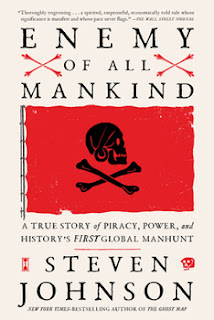Breaking Through
- Get link
- X
- Other Apps
A powerful memoir from Katalin Karikó, winner of the 2023 Nobel Prize in Physiology or Medicine, whose decades-long research led to the COVID-19 vaccines
Katalin Karikó has not been awarded a Nobel Prize. However, she is widely recognized for her pivotal work in the development of mRNA technology, which played a crucial role in the creation of mRNA-based COVID-19 vaccines.
Karikó's groundbreaking research focused on synthetic mRNA and its potential therapeutic uses. She faced numerous challenges and setbacks in her career, as her ideas were initially met with skepticism. One of her key contributions was finding a way to deliver mRNA into cells without triggering an unwanted immune response. She and her colleagues discovered that modifying nucleosides in mRNA helped evade the body's immune system, allowing the mRNA to produce proteins effectively.
This modification was crucial for the development of mRNA vaccines, like those produced by Pfizer-BioNTech and Moderna for COVID-19. These vaccines use synthetic mRNA to instruct human cells to produce a protein that is part of the SARS-CoV-2 virus. This protein, in turn, triggers an immune response, thereby providing immunity against the virus.
Early Life and Family Background (Pages 13-27): Karikó narrates her childhood experiences in Kisújszállás, Hungary, including her father's work as a butcher and her mother's resilience through historical upheavals like World War II. She describes the hardships and simple joys of rural life in a communist regime, where resourcefulness and community were vital.
Education and Community (Pages 28-36): Karikó recounts her early education in a crowded classroom and the importance of learning and healthcare in her community. She reflects on the impact of political changes in Hungary, including the 1956 revolution, on her family and community, and how these experiences shaped her understanding of the world.
Healthcare and Polio Vaccination (Pages 37): The author recalls the widespread fear of polio and the relief brought by the introduction of the polio vaccine in Hungary, demonstrating the government's successful efforts in vaccinating children against the disease.
An extremely brief Interlude on science
By this point, biologists already understood a lot about genetics. They
understood that genes are tiny snippets of DNA, packed into chromosomes
inside a cell’s nucleus. They knew that DNA is the genetic information of
an organism—a blueprint not only for the making of the body but also for
all the work that body does to keep that organism alive. They knew that
DNA is “written” using four basic building blocks, or nucleosides:
adenosine (A), thymine (T), guanosine (G), and cytidine (C). Just as the
twenty-six letters of the Latin alphabet can be combined and recombined
into an endless array of meanings, the specific order of these four
nucleoside “bases” directs that gene’s function
The references to mRNA in the book "Breaking Through" by Katalin Karikó are spread across various pages and cover different aspects of mRNA research and development:
Discovery and Significance of mRNA (Page 63): The history of science includes many instances of skepticism towards new ideas. In 1960, the concept of a messenger carrying genetic information from DNA to ribosomes, later known as mRNA, was confirmed. RNA is temporary and composed of nucleosides, with mRNA playing a crucial role in the author's story.
mRNA Synthesis Process (Pages 64-65): mRNA synthesis involves transcription (copying gene sequences to RNA) and translation (converting genetic code into a protein). The ribosome reads mRNA to produce proteins, which are vital for survival. Once proteins are produced, the mRNA is broken down.
mRNA in Vaccine Development (Pages 186, 204): Katalin Karikó discusses the potential of mRNA in vaccine development, particularly in eliciting an immune response. Experiments with different RNA types showed that mammalian mRNA caused a minimal inflammatory response.
Technical Challenges with mRNA (Pages 141-144, 152): Karikó shares her journey of working with mRNA, its therapeutic potential, and the challenges in synthesizing and delivering it effectively.
Inflammatory Response of mRNA (Pages 194-197, 205-206): The author describes her investigation into why mRNA triggers an immune response, a crucial aspect of its use in therapy. This discovery led to significant breakthroughs in understanding and utilizing mRNA.
Modified mRNA and Its Efficiency (Pages 212-214): The substitution of uridine with pseudouridine in mRNA led to a reduction in inflammation and an increase in protein production, making modified mRNA more effective for therapeutic use.
RNA Challenges in the Laboratory (Pages 108, 144): Karikó highlights the difficulties in working with RNA, including its instability and the need for meticulous handling in experimental processes.
Advancements in mRNA Research (Pages 172, 230, 238): The author reflects on the rapid advancements in genetic science and the potential of mRNA therapies, particularly in the context of the COVID-19 pandemic.
These references provide a detailed overview of the significant role of mRNA in scientific research, its potential applications in medicine, and the challenges and breakthroughs encountered by Karikó in her groundbreaking work.
- Get link
- X
- Other Apps

Comments
Post a Comment